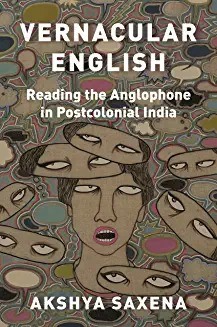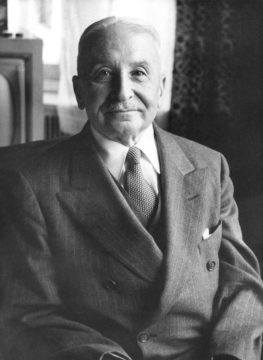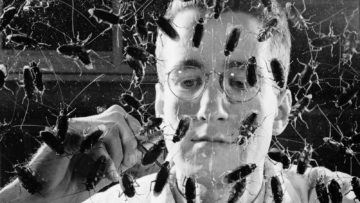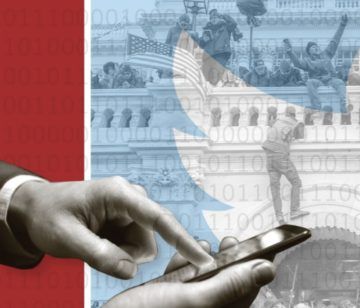Akshya Saxena in LA Review of Books:
 AS SOMEONE WHO grew up in India in the early 2000s, after the once-colonized country had opened itself to the global economy, one thing was clear to me. Aspiration and English were synonymous. Both were essential. This lesson was drilled into me at my missionary-run English-medium high school in New Delhi. Whether we dreamed of becoming doctors or engineers or corporate hotshots, we were repeatedly told that we needed to have English. Students were penalized for speaking in any language other than English, and our pronunciations were disciplined in preparation for roles no one doubted we would take on. Away from the institutional ear, my peers and I still cherished our other languages, to varying degrees. But, for the most part, we learned to joke, dream, rebel, and obey in English.
AS SOMEONE WHO grew up in India in the early 2000s, after the once-colonized country had opened itself to the global economy, one thing was clear to me. Aspiration and English were synonymous. Both were essential. This lesson was drilled into me at my missionary-run English-medium high school in New Delhi. Whether we dreamed of becoming doctors or engineers or corporate hotshots, we were repeatedly told that we needed to have English. Students were penalized for speaking in any language other than English, and our pronunciations were disciplined in preparation for roles no one doubted we would take on. Away from the institutional ear, my peers and I still cherished our other languages, to varying degrees. But, for the most part, we learned to joke, dream, rebel, and obey in English.
Everyone agreed that English was A Good Thing to Have. I heard similar ideas about the importance of English at home as well. My father, raising daughters in a country that did not value women, encouraged my sister and me to speak in English, and beamed with pride when we did. This expectation felt awkward — absurd, even — because English was not a language the other women in our family shared.
More here.

 In a brief event at the White House on Monday evening, President Biden unveiled an image that NASA and astronomers hailed as the deepest view yet into our universe’s past. The image, taken by the James Webb Space Telescope — the largest space telescope ever built — showed a distant patch of sky in which fledgling galaxies were burning their way into visibility just 600 million years after the Big Bang. “This is the oldest documented light in the history of the universe from 13 billion — let me say that again, 13 billion — years ago,” Mr. Biden said. The president, who apologized for beginning the event tardily, praised NASA for its work that enabled the telescope and the imagery it will produce. “We can see possibilities no one has ever seen before,” Mr. Biden said. “We can go places no one has ever gone before.”
In a brief event at the White House on Monday evening, President Biden unveiled an image that NASA and astronomers hailed as the deepest view yet into our universe’s past. The image, taken by the James Webb Space Telescope — the largest space telescope ever built — showed a distant patch of sky in which fledgling galaxies were burning their way into visibility just 600 million years after the Big Bang. “This is the oldest documented light in the history of the universe from 13 billion — let me say that again, 13 billion — years ago,” Mr. Biden said. The president, who apologized for beginning the event tardily, praised NASA for its work that enabled the telescope and the imagery it will produce. “We can see possibilities no one has ever seen before,” Mr. Biden said. “We can go places no one has ever gone before.” Isabella M. Weber in the Journal of the History of Ideas (photo by Ludwig von Mises Institute):
Isabella M. Weber in the Journal of the History of Ideas (photo by Ludwig von Mises Institute): It is 1919, and a young astronomer turns a street corner in Pasadena, California. Something seemingly humdrum on the ground distracts him. It’s an ant heap. Dropping to his knees, peering closer, he has an epiphany – about deep time, our place within it, and humanity’s uncertain fate. The astronomer was
It is 1919, and a young astronomer turns a street corner in Pasadena, California. Something seemingly humdrum on the ground distracts him. It’s an ant heap. Dropping to his knees, peering closer, he has an epiphany – about deep time, our place within it, and humanity’s uncertain fate. The astronomer was  It is impossible not to be moved by the final pages of Robert Crawford’s Eliot: After The Waste Land, in which the 20th century’s greatest poet at last finds contentment with his young wife Valerie. Much more than contentment: “I am madly happy in being her husband,” Eliot wrote to his friend Violet Schiff upon the couple’s return from honeymoon in 1957. The wedding – and indeed, the whole courtship and relationship – between the 68-year-old Nobel Laureate and his 30-year-old Yorkshire-born secretary had been a secret from nearly everyone who knew them until the very last moment. The ceremony had been conducted at 6.15 in the morning, by special licence from the Archbishop of Canterbury, so as to evade the attentions of the press.
It is impossible not to be moved by the final pages of Robert Crawford’s Eliot: After The Waste Land, in which the 20th century’s greatest poet at last finds contentment with his young wife Valerie. Much more than contentment: “I am madly happy in being her husband,” Eliot wrote to his friend Violet Schiff upon the couple’s return from honeymoon in 1957. The wedding – and indeed, the whole courtship and relationship – between the 68-year-old Nobel Laureate and his 30-year-old Yorkshire-born secretary had been a secret from nearly everyone who knew them until the very last moment. The ceremony had been conducted at 6.15 in the morning, by special licence from the Archbishop of Canterbury, so as to evade the attentions of the press.
 One strand of animal ethics is preoccupied with suffering—suffering that occurs in slaughterhouses, laboratories, and other sites of animal confinement. Another strand counters this focus on the elimination of suffering by urging that we instead emphasize respect for the rights and dignity of animals. While contributions to these strands of animal ethics have contributed to increased recognition of animals’ plights, they mostly presuppose frameworks that obscure the nature of the problem. Many practices that harm animals are embedded in institutions that also systematically harm socially vulnerable human beings. Analyzing these mutually supporting systems of harms to humans and other animals is imperative so that we are equipped to meaningfully intervene in the injustices animals and human outgroups are facing.
One strand of animal ethics is preoccupied with suffering—suffering that occurs in slaughterhouses, laboratories, and other sites of animal confinement. Another strand counters this focus on the elimination of suffering by urging that we instead emphasize respect for the rights and dignity of animals. While contributions to these strands of animal ethics have contributed to increased recognition of animals’ plights, they mostly presuppose frameworks that obscure the nature of the problem. Many practices that harm animals are embedded in institutions that also systematically harm socially vulnerable human beings. Analyzing these mutually supporting systems of harms to humans and other animals is imperative so that we are equipped to meaningfully intervene in the injustices animals and human outgroups are facing. While thirty years ago, scholars, pundits, and political leaders were confidently proclaiming the end of history, few now deny that it has returned—if it ever ended. And it has done so at a time of not just geopolitical and economic dislocations but also historic technological dislocations. To say that this poses a challenge to liberal democratic governance is an understatement. As history shows, the threat of chaos, uncertainty, weakness, and indeed ungovernability always favors the authoritarian, the man on horseback who promises stability, order, clarity—and through them, strength and greatness.
While thirty years ago, scholars, pundits, and political leaders were confidently proclaiming the end of history, few now deny that it has returned—if it ever ended. And it has done so at a time of not just geopolitical and economic dislocations but also historic technological dislocations. To say that this poses a challenge to liberal democratic governance is an understatement. As history shows, the threat of chaos, uncertainty, weakness, and indeed ungovernability always favors the authoritarian, the man on horseback who promises stability, order, clarity—and through them, strength and greatness. Corey Robin in The New Yorker (photograph by Tasos Katopodis / Getty)
Corey Robin in The New Yorker (photograph by Tasos Katopodis / Getty) Karina Patricio Ferreira Lima , Mona Ali, Richard Kozul-Wright, Chris Marsh, and Lara Merling in Phenomenal World:
Karina Patricio Ferreira Lima , Mona Ali, Richard Kozul-Wright, Chris Marsh, and Lara Merling in Phenomenal World: Alexander Wells in Sidecar (photo by
Alexander Wells in Sidecar (photo by  AT THE ROOT
AT THE ROOT T
T Berlin is not pretty. You should know that beforehand. You don’t come here for the beautiful architecture of an old European city.
Berlin is not pretty. You should know that beforehand. You don’t come here for the beautiful architecture of an old European city.